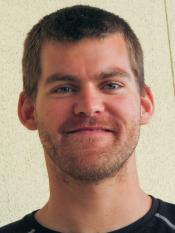Eben Broadbent

Eben N. Broadbent is an assistant professor, starting August 2014, in the Department of Geography at the University of Alabama where he co-directs the Spatial Ecology and Conservation (SPEC) Lab and is an affiliated researcher with the Woods Institute for the Environment at Stanford University. His general research interests are to use new spatial technologies for conservation ecology and sustainability science. From 2012-14 he was a postdoctoral fellow with INOGO, where he coordinated fieldwork, including participatory mapping efforts, related to the terrestrial ecosystem component and currently leads the INOGO Mapas effort developing automated techniques to map land use and land cover from high-resolution satellite imagery. In 2012-13, he served as a postdoctoral fellow affiliated with the Smithsonian Conservation Biology Institute linking the ForestGEO plot network with global deforestation data and with Harvard Forest using coupled models of land use, forest composition and disturbance, and ecosystem services to assess impacts of different future scenarios in New England. Prior to this he served as a research fellow in the Sustainability Science Program of the Harvard Kennedy School.
He earned a bachelor’s degree in botany from the University of Vermont in 2000, where he investigated niche partitioning among tree canopy cloud forest epiphytes in Costa Rica. He obtained his master's degree in forestry from the University of Florida in 2005, where his thesis linked field measurements of forest regeneration in selective logging tree fall gaps in Bolivia with spectral unmixing of ASTER satellite imagery. He then received his doctorate in Biology from Stanford University in 2012, where his dissertation focused on using remote sensing to understand forest dynamics in the tropics. Funding for this research came from NSF and NASA, and from the DOE GCEP program where he was a research fellow. Over the last decade he has conducted research in the Brazilian, Bolivian, and Peruvian Amazon, Papua Indonesia, Hawaii, Costa Rica, and Mexico, and also including work in California and in his childhood forests of New England. He is involved in a variety of projects linking social sciences with forest ecology, conservation biology and remote sensing, including investigating feedbacks between soil fertility and land use decision making in the Amazon and linking land use change with water quality and biodiversity in Costa Rica.